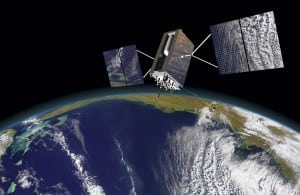
Though the Air Force believes a modified radio frequency (RF) card could be the solution to its next-generation Global Positioning System (GPS) III navigation payload issues, it is still considering alternative sources to develop the payload. Air Force Col. William Cooley, director of the service’s GPS directorate, said Friday the modified RF card being installed by prime contractor Lockheed Martin [LMT] and payload developer Exelis [XLS] would probably eliminate the signal “crosstalk,” or RF interference, that he called the crux…













